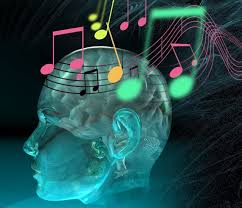Efficacy of music listening with conventional physiotherapy management on sub-acute stroke patients
Keywords:
Music, Stroke, depression, Balance, Disability, FatigueAbstract
The use of melody and rhythm has long been recommended for music-based treatment. Current study was to determine the effect of music listening additions to the conventional protocol that aim to enhance stroke patient’s responses to depression, balance, disability and fatigue.Methods: A total 10 subacute stroke patients with mean age of 55.2±4.3 years were participated in the current study. As per inclusion criteria the patients were randomly divided into two groups, group A and B (n=05) in each group. Group-A participants were undergone music listening for 20 minutes, and group-B as a control group, both groups were undergone a standard conventional physiotherapy regime. A total interventional regime consisted of 4 sessions per week for 28 days. Study outcomes such as depression, balance, disability and fatigue were assessed at baseline, 14th, 29th and 37th day follow up was done without music listening after 28 days lasted. Results: The result of the study reported that disability, depression, fatigue and balance were improved in both groups. Although the patients in group A, who underwent music therapy showed the highly significant improvement (p<0.001) than group-B, who underwent conventional physiotherapy only.Conclusion: Study concluded that music listening along with conventional physiotherapy management is more effective than conventional physiotherapy alone in the management of stroke.
References
Bangert, M., Altenmuller, E., 2003. Mapping perception to activation in piano practice: a longitudinal DC-EEG study. BMC. Neurosci. 4, 26.
Bangert, M., Peschel, T., Schlaug, G., et al, 2006. Shared networks for auditory and motor processing in professional pianists: evidence from fMRI conjuction. NeuroImage. 30, 917–926.
Blood, A., Zatorre, R.J., 2001. Intensely pleasurable responses to music correlate with activity in brain regions implicated in reward and emotion. Proc. Natl. Acad. Sci. USA. 98, 11818–11823.
Blood, A.J., Zatorre, R.J., Bermudez, P., Evans, A.C., 1999. Emotional responses to pleasant and unpleasant music correlate with activity in paralimbic brain regions. Nat. Neurosci. 2, 382–387.
Chan, M.F., Chan, E.A., Mok, E., Kwan Tse, F.Y., 2009. Effect of music on depression levels and physiological responses in community-based older adults. Int J Ment Health Nurs. 18(4), 285-94.
Drevets, W.C., Price, J.L., Bardgett, M.E., et al. 2002. Glucose metabolism in the amygdala in depression: relationship to diagnostic subtype and plasma cortisol levels. Pharmacol. Biochem. Behav. 71, 431–447.
Forsblom, A., Laitinen, S., Särkämö, T., Tervaniemi, M., 2009. Therapeutic role of music listening in stroke rehabilitation. Ann N Y Acad Sci. 1169, 426-30.
Gerdner, L.A., Swanson, E.A., 1993. Effects of individualized music on confused and agitated elderly patients. Arch. Psychiatr. Nurs. 7, 284–291.
Hatano, S., 1976. Experience from a multicentre stroke register: a preliminary report. Bulletin. of the World Health Organization 54, 541–53
Hillecke, T., Nickel, A., Bolay, H.V., 2005. Scientific perspectives on music therapy. Ann. N. Y. Acad. Sci. 1060: 271–282.
Suzanne, K.J., 2005. Music as Therapy. Southern Medical Assosiation, 282-288.
Klassen, J.A., Liang, Y., Tjosvold, L., et al. 2008. Music for pain and anxiety in children undergoing medical procedures: a systematic review of randomized controlled trials. Ambul. Pediatr. 8, 117–128.
Koelsch, S., 2009. Music-syntactic processing and auditory memory: similarities and differences between ERAN and MMN. Psychophysiology. 46, 179–190.
Lahav, A., Saltzman, E., Schlaug, G., 2007. Action representation of sound: audiomotor recognition network while listening to newly-acquired actions. J. Neurosci. 27, 308–314.
Maratos, A., Gold, C., 2003. Music therapy for depression. Cochrane Collaboration. 4,1-7
Nelson, A., Hartl, W., Jauch, K.W., et al. 2008. The impact of music on hypermetabolism in critical illness. Curr. Opin. Clin. Nutr. Metab. Care. 11: 790–794.
Ozdemir, E., Norton, A., Schlaug, G., 2006. Shared and distinct neural correlates of singing and speaking. Neuroimage. Nov 1; 33(2),628-35.
Downie, P.A., 1993. Neurology for physiotherapists, Jaypee Brothers 4, 240-3, 267-94.
Sairam, T.V., 2006. Melody and Rhythm ‘Indianness’ in Indian music and music therapy. Music Therapy Today 7, 876-91.
Schlaug, G., Marchina, S., Norton, A., 2009. Evidence for plasticity in white-matter tracts of patients with chronic Broca's aphasia undergoing intense intonation-based speech therapy. Annals of New York Academy of Sciences. 1169, 385–394.
Schlaug, G., Marchina, S., Norton, A., 2008. From Singing to Speaking: Why Singing May Lead to Recovery of Expressive Language Function in Patients with Broca's Aphasia. Music Percept. 25(4), 315-323.
Gibberson, S., 2005. Music therapy and neurological rehabilitation. Jessica Kingsley Publisher. 135.
Stein, M.B., Simmons, A.N., Feinstein, J.S., Paulus, M.P., 2007. Increased amygdala and insula activation during emotion processing in anxiety-prone subjects. Am. J. Psychiatry. 164, 318–27.
Sussman, E.S., 2007. A new view on the MMN and attention debate: the role of context in processing auditory events. J. Psychophysiol. 21, 164–170.
Margaret, S.V., 2007. Post-Stroke Fatigue. Journal of New Zealand Medical Association. 120, 1264.
Thaut, M.H., Gardiner, J.C., Holmberg,D., et al. 2009. Neurologic music therapy improves executive function and psychosocial function in traumatic brain injury rehabilitation. Ann. N. Y. Acad. Sci. Neurosciences and Music III–Disorders and Plasticity. 1169: 406–416.
The world health report, 2002. Reducing Risks, Promoting Healthy Life, World Health Organization.
Uozumi T, Tamagawa A, Hashimoto T, Tsuji S. Motor hand representation in cortical area 44. Neurology. 2004; 62(5),757-61.
Wade, D.T., Hewer, R.L., David, R.M., Enderby, P.M., 1986. Aphasia after stroke: natural history and associated deficits. J Neurol Neurosurg Psychiatry. 49(1), 11-6.
Zatorre, R.J., Belin, P., 2001. Spectral and temporal processing in human auditory cortex. Cereb. Cortex. 11, 946–953.

Published
How to Cite
Issue
Section
Copyright (c) 2013 S. J. Kachanathu, P. Bhatia, S. Nuhmani, V. Vennu

This work is licensed under a Creative Commons Attribution-NonCommercial-NoDerivatives 4.0 International License.



